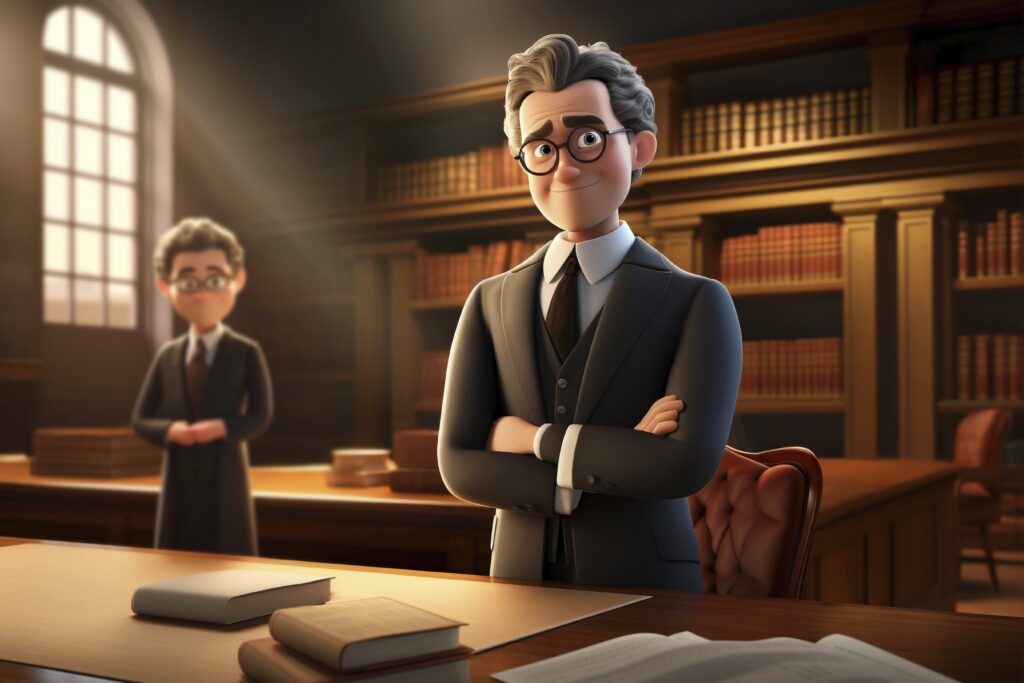Introduction
The animation industry has transformed from traditional hand-drawn sketches to cutting-edge computer-generated imagery, becoming a global phenomenon that captivates audiences of all ages. With this exponential growth, the legal intricacies surrounding animation law regarding representation have become increasingly significant. Navigating these complexities is essential for animators, studios, agents, and legal professionals to protect creative works, secure fair deals, and prevent costly disputes.
Understanding Representation in Animation
Representation in the animation sector refers to the legal and professional relationships between creators (animators), their agents, and production studios. Agents serve as intermediaries, advocating for animators’ interests, negotiating contracts, and ensuring compliance with industry standards. However, the laws and regulations governing these relationships can vary widely, making it imperative for all parties to understand their rights and obligations.
Key Legal Considerations
1. Intellectual Property Rights
At the core of animation law is the protection of intellectual property rights. Intellectual property (IP) encompasses creations of the mind, such as characters, storylines, and visual designs. Animators must secure their IP rights to prevent unauthorized reproduction, distribution, or adaptation of their work. This protection is typically achieved through copyrights, trademarks, and, in some cases, patents.
- Copyrights: A copyright grants the creator exclusive rights to reproduce, distribute, and display their work. For instance, the U.S. Copyright Office allows creators to register their work, providing legal evidence of ownership and the ability to seek damages in infringement cases (source).
- Trademarks: Trademarks protect brand names, logos, and slogans that distinguish goods or services. In animation, iconic character logos or series titles can be trademarked to prevent confusion in the marketplace.
- Patents: While less common in animation, patents may apply to novel animation techniques or software developed by animators.
Case Example:
The legal battle between animation studios DreamWorks and Pixar over the use of certain animation technologies highlights the importance of securing patents and understanding IP laws. The dispute emphasized the need for clear legal strategies to protect proprietary methods.
2. Contracts and Agreements
Contracts are legally binding agreements that outline the terms of engagement between animators, agents, and studios. These documents cover a wide range of elements, including compensation, deliverables, timelines, IP ownership, and confidentiality.
- Work-for-Hire Agreements: In many cases, studios hire animators under work-for-hire agreements, wherein the studio retains ownership of the IP created. Animators should carefully review these terms to understand their rights.
- Licensing Agreements: Alternatively, animators may license their creations to studios, retaining ownership while granting usage rights under specified conditions.
Important Considerations:
- Termination Clauses: Outline the conditions under which parties can terminate the agreement.
- Dispute Resolution: Specify mechanisms for resolving conflicts, such as arbitration or mediation.
- Confidentiality Agreements (NDAs): Protect sensitive information shared during collaboration.
3. Agent Representation Laws
Agents play a pivotal role in an animator’s career trajectory, but their operations are regulated by specific laws to prevent exploitation.
- Licensing Requirements: In certain jurisdictions, agents must obtain licenses to operate legally. For example, the California Talent Agencies Act mandates that agents obtain a license from the state Labor Commissioner (source).
- Commission Limits: Laws may cap the percentage agents can charge as commissions, protecting animators from excessive fees.
- Fiduciary Duties: Agents are obligated to act in the best interest of their clients, maintaining transparency and avoiding conflicts of interest.
International Challenges in Animation Law
The animation industry is inherently global, with collaborations often spanning multiple countries. This international scope introduces challenges due to varying laws and regulations.
1. Differing IP Laws
- Berne Convention: An international agreement that ensures mutual recognition of copyrights among member countries (source). However, enforcement mechanisms and specific protections can differ.
- Moral Rights: Some countries, like France, grant creators inalienable moral rights over their work, affecting how animations can be altered or used.
2. Cross-Border Contracts
- Choice of Law Clauses: Contracts should specify which country’s laws govern the agreement to avoid legal ambiguities.
- Jurisdiction Issues: Determining which courts have authority in disputes is crucial when parties are in different countries.

Real-World Examples
1. Studio Ghibli’s International Licensing
Japanese animation studio Studio Ghibli faced challenges when distributing its films internationally due to differences in censorship laws and distribution rights. Negotiations required careful attention to both Japanese laws and those of the importing countries.
2. Netflix’s Global Animation Initiatives
As Netflix expands its animation offerings globally, it must navigate various legal landscapes to produce and distribute content. This includes securing rights from animators in different countries and ensuring compliance with local laws.
Best Practices for Navigating Animation Law Regarding Representation
- Conduct Thorough Research: Before entering any agreements, animators and studios should research applicable laws and industry standards.
- Engage Specialized Legal Counsel: Lawyers specializing in entertainment or animation law can provide invaluable guidance, draft robust contracts, and represent clients in disputes.
- Regularly Update Knowledge: Laws and regulations can change; staying informed about legal developments ensures ongoing compliance and protection.
- Foster Transparent Relationships: Open communication between animators, agents, and studios can prevent misunderstandings and build trust.
Frequently Asked Questions
Work-for-Hire: The hiring party (e.g., a studio) owns the IP created by the animator during their employment.
Licensing Agreement: The animator retains ownership of the IP but grants the studio rights to use the work under specific conditions.
International laws can impact IP protection, distribution rights, and contractual obligations. It’s essential to understand the laws in each country where your work will be used or distributed.
Yes, if the character serves as a brand identifier, you can trademark its name or distinctive features. This helps prevent others from using similar characters that could confuse consumers.
Ensure the agent is licensed (if required), has a good industry reputation, understands your career goals, and abides by fiduciary duties.
Register your work with the appropriate authorities, use watermarks or digital rights management (DRM) technologies, and monitor for unauthorized use.
Key Takeaways
- Protect Your Intellectual Property: Securing IP rights is foundational to safeguarding your creations and monetizing your work.
- Draft Clear and Comprehensive Contracts: Well-defined agreements outline expectations and reduce the risk of disputes.
- Understand Agent Relationships: Knowing the legal obligations and rights in agent representation helps maintain beneficial partnerships.
- Stay Informed on International Laws: Global collaborations require awareness of varying legal landscapes to ensure compliance.
- Seek Professional Legal Advice: Experts in animation law can navigate complexities and provide tailored solutions.
The complexities of animation law regarding representation reflect the industry’s dynamic and global nature. By understanding and proactively addressing legal considerations, animators, agents, and studios can foster collaborations that respect creative rights and contribute to the industry’s vibrant growth. As animation continues to evolve, staying informed and adaptable remains essential for all stakeholders.
Read More: Does Capitalization Matter for Copyright?
External Resources
- World Intellectual Property Organization (WIPO): Offers information on international IP treaties and resources (source).
- U.S. Copyright Office: Provides guidance on copyright registration and enforcement (source).
- Entertainment Law Resources: Educational materials on legal issues in the entertainment industry (source).

Jonathan Hartley is a highly regarded senior criminal lawyer with over 15 years of experience in the UK legal system. He began his career at a prestigious law firm in London, where he specialized in both defense and criminal law. Known for his ability to craft compelling defense strategies, Jonathan has successfully represented clients in high-profile cases and earned multiple awards for his contributions to the field of law.
In addition to his legal practice, Jonathan is also an accomplished legal writer, contributing articles to top legal blogs and online platforms. His work not only provides valuable insights into legal matters but also meets Google’s E-E-A-T standards by delivering accurate, reliable, and trustworthy information to readers. Committed to legal ethics and public welfare, Jonathan actively participates in discussions on law and justice while educating the public through his writing.










